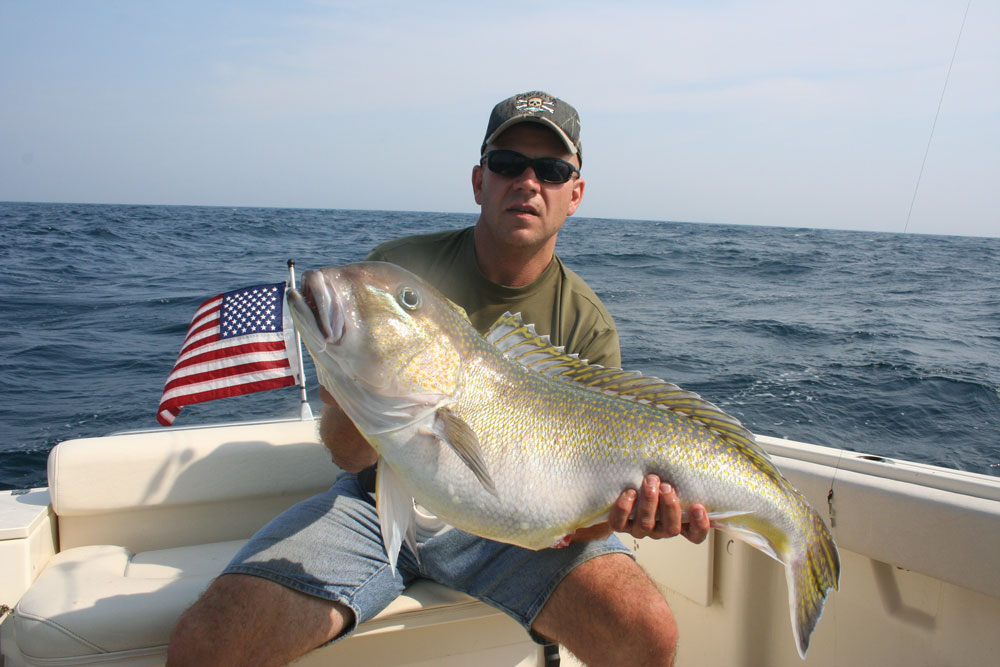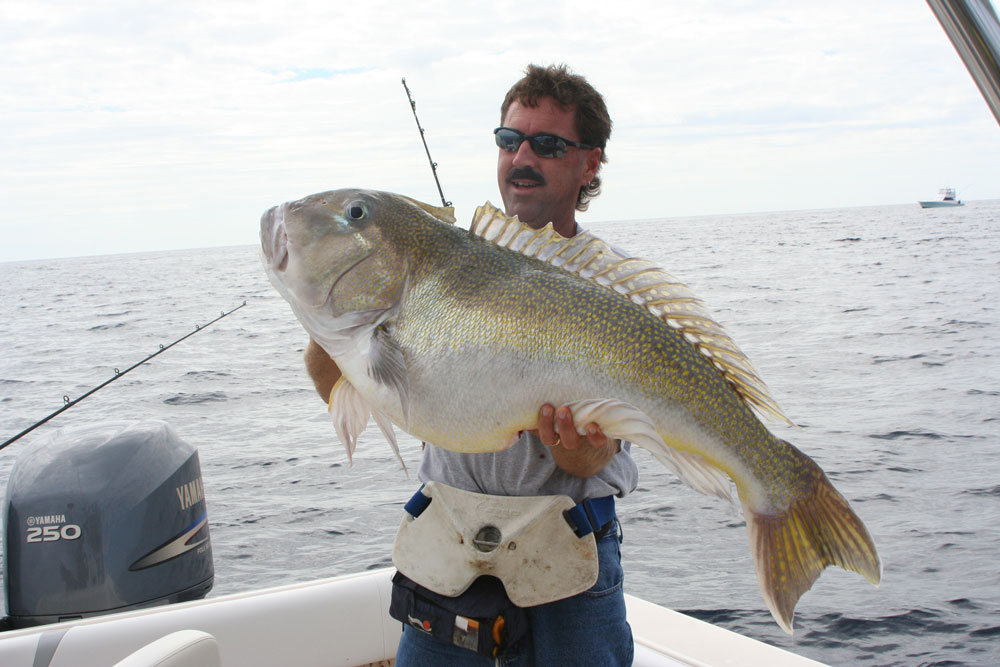There’s a rich vein of gold — golden tilefish, that is — laying off the Atlantic coast. If you’re looking for a new challenge, these fish might fit the bill. The good news: since these fish live on the bottom they eat a lot of crabs, lobster, and other crustaceans creeping along in the deep, and as a result their meat has an unusual flavor that’s distinctly shellfish-ish. The bad news: you’ll have to try deep dropping to between 650’ and 850’ to hook them up. Here’s a quick look at the basics of fishing for golden tilefish.
We talked through the tackle basics in the video, but there are a few more specifics you should know about. First off, if you’re going to use a meat-curtain, make sure it has circle hooks in the 10/0 to 12/0 range. Occasionally you can find these in the form of “grouper deep drop” rigs but many tackle shops in the Mid-Atlantic region don’t carry them. You may also have trouble finding weights in the three to five pound range. Sash weights work well but you can also clip two dredge weights together, in a pinch. As for the 850 gram jigs, these can be tough to find, too, especially since Jerk That Jig went out of business. At the time of this writing Angler’s Sport Center in Annapolis had some, but we’d suggest calling ahead to make sure they still have 'em in stock before driving over there. One final tackle suggestion: spool up with braid of at least 50 pound test, with 60 to 80 pound test being best. You’ll have a lot of line out with a bunch of weight on the end of it before a fish even strikes, and a good shot at hooking into 40- to 50-pound-plus fish. A break-off when the line’s on bottom can more or less empty the reel and put you out of action - so in this case, heavier line is better.

Now that you know the tackle and the how-to part of the golden tilefish equation, let’s dig a bit deeper into the where-to. Golden tiles can grow upwards of 60 pounds, and live along the edge of the Continental Shelf. They dig burrows to hide in, and form tightly-packed colonies in areas with a green muddy bottom. Start the prospecting process at home, with a good chart book (or a little help from Google). Look for areas in this depth range which are marked “grn mud,” which indicates that green muddy bottom. The bight areas of east coast canyons are particularly good bets, especially when you locate the proper bottom where it's constantly hit by a strong current.
Once you have a general vicinity identified and you’re ready to start searching in earnest, you can “prospect” by preparing a six-inch length of copper pipe, drilling a hole about a half-inch from one end, and capping the other end. Clip a two to four pound sash weight to a swivel on the end of an 80 to 120 pound class rig spooled with braid line, and tie a one foot leader to the other end of the sash weight. Tie another swivel to the end of this line, then clip it through the hole you drilled in the pipe. When you arrive at the edge of the shelf look for areas where there’s a plateau on the drop-off, in the appropriate depth range. Drop down your prospecting tube, and allow it to drag bottom for a bit. When you pull it back up, check the bottom sample you’ve collected and see if there’s green mud inside. If there isn’t, move on. But if you discover the green you might also discover the gold — prep your lines and try fishing in the area.

Editor's Note: This article was originally published in April of 2017 and was last updated May 8. 2024.